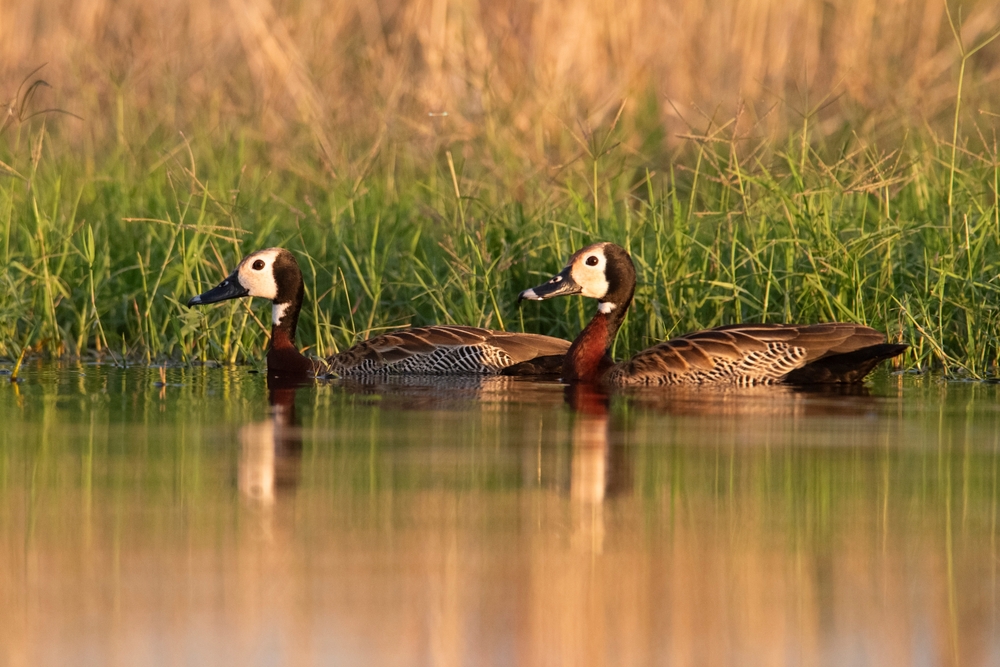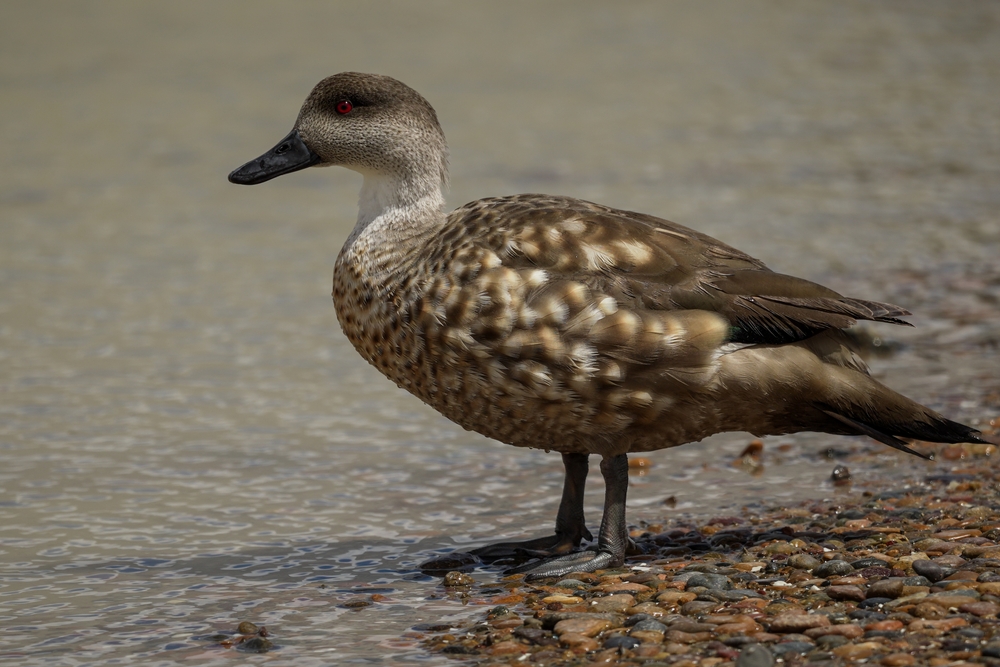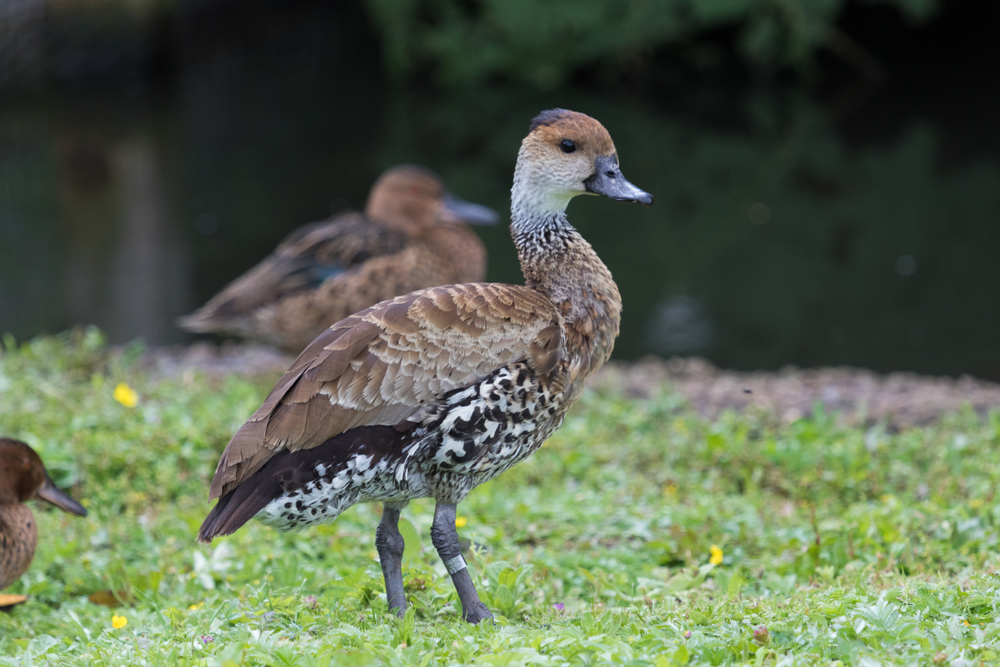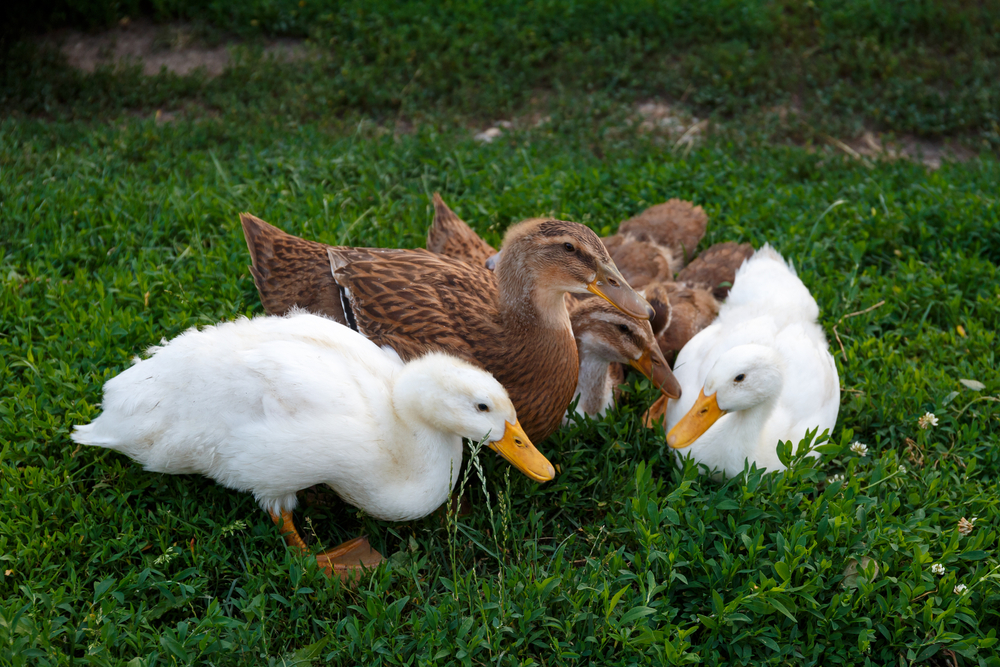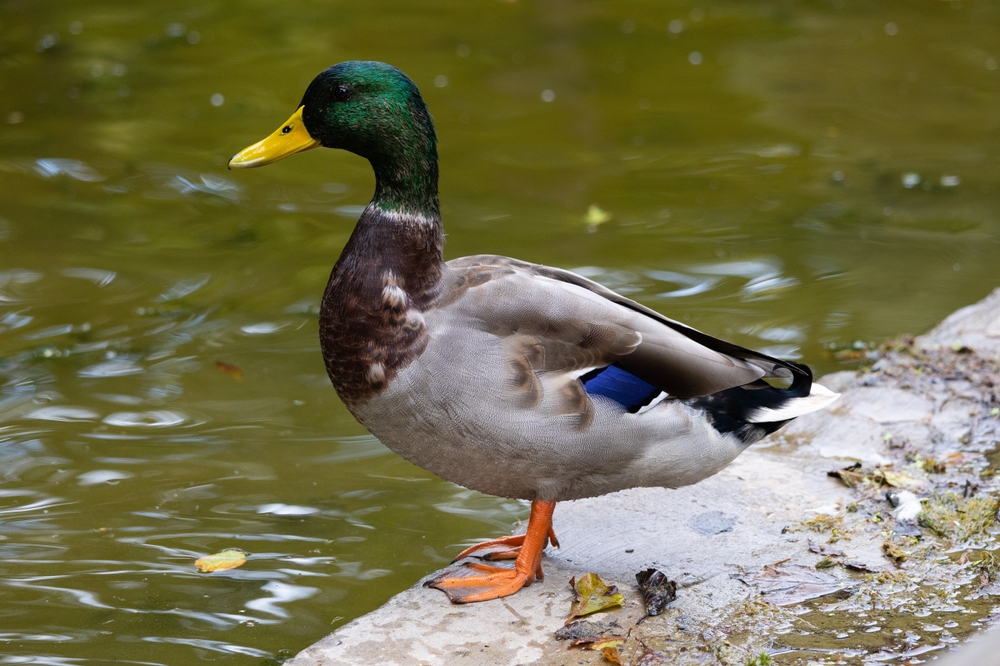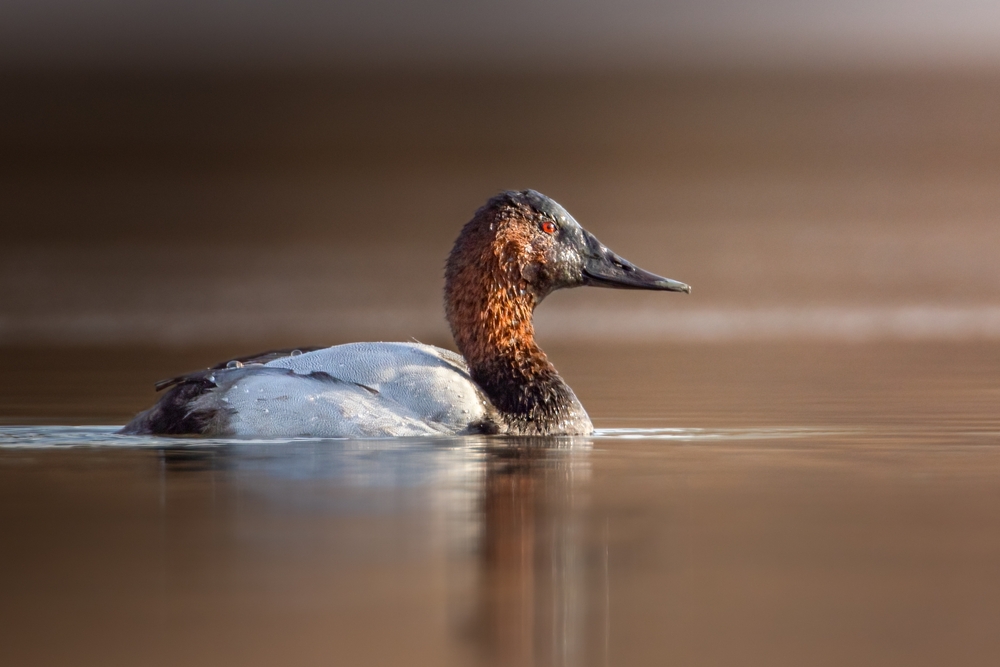Its closest relatives are other whistling-ducks in the genus Dendrocygna, especially the Black-bellied Whistling Duck(D. autumnalis) and the Fulvous Whistling Duck (D. bicolor), which share similar size, structure, and social behaviors.
About
The White-faced Whistling Duck (Dendrocygna viduata) is a striking and highly social waterfowl belonging to the family Anatidae. It is widely distributed across sub-Saharan Africa, Madagascar, and much of South America, making it one of the most widespread species of whistling ducks. As its name suggests, this species is easily identified by its bold white face, contrasting with a dark crown and nape, a chestnut breast, and a black-and-white barred flanks. Its tall, upright posture and long neck give it a goose-like appearance, while its distinctive whistling call carries across wetlands and large flocks.
Measuring about 40–45 cm (16–18 in) in length, the White-faced Whistling Duck is a medium-sized species with long legs and a graceful build. Its plumage is a harmonious blend of white, black, chestnut, and brown, making it one of the most visually attractive ducks in its range. Males and females look alike, though juveniles are duller with less distinct facial markings.
This duck inhabits freshwater lakes, ponds, marshes, rice fields, and reservoirs, often gathering in flocks that can number in the hundreds or thousands. Its diet consists largely of seeds, aquatic plants, and grasses, but it also feeds on insects and small aquatic invertebrates. Feeding is often done at night or during cooler hours, with birds foraging by dabbling and grazing.
The White-faced Whistling Duck is monogamous, forming long-lasting pair bonds. Unlike many ducks, both parents participate in raising the young. Nests may be placed on the ground in dense vegetation, sometimes even in tree cavities or on floating vegetation. Clutches contain 8–12 eggs, and parents guard and guide their chicks together.
With its distinctive appearance, melodious whistling, and strong flocking behavior, the White-faced Whistling Duck is one of the most iconic and recognizable waterfowl of tropical wetlands.
Physical Characteristics
The White-faced Whistling Duck (Dendrocygna viduata) is a long-legged, long-necked whistling-duck recognized for its striking head pattern and upright stance.
Head & Face
Distinctive white face and forehead (sometimes tinged buff), sharply contrasting with a dark crown, hindneck, and throat. Eyes are dark and prominent.
Plumage
Neck and upper breast are rich chestnut-rufous, while the lower body is barred with bold black-and-white vermiculations. Upperparts are dark brown with paler feather edges, blending well in wetland vegetation. Sexes are alike, with little dimorphism. Juveniles appear duller, with grayish face markings.
Body & Posture
Slender, upright carriage with a long neck and slim build, giving a goose-like profile compared to typical ducks.
Wings
Broad, rounded wings with dark flight feathers. Wing coverts and mantle show warmer brown tones; in flight the overall impression is dark with barred flanks flashing.
Tail
Short and rounded, blending smoothly with the body outline.
Legs & Feet
Long, gray to bluish legs positioned slightly rearward, aiding both swimming and confident walking on mudflats and grass. Webbed feet support dabbling and surface swimming.
Size
-
Length: 16–19 in (40–48 cm)
-
Wingspan: 29–31 in (74–79 cm)
-
Weight: 1.1–1.5 lbs (500–700 g)
The White-faced Whistling Duck’s combination of a crisp white face, chestnut breast, barred flanks, and upright silhouette makes it one of the most recognizable and widely distributed whistling-ducks in Africa and South America.
Reproduction
The White-faced Whistling Duck (Dendrocygna viduata) breeds in warm, shallow wetlands across Africa and South America, with timing closely tied to rainfall and water levels.
Mating and Courtship
Pairs are monogamous and often long-term, sometimes lasting several years. Courtship is subtle, involving mutual head-bobbing, synchronized swimming, and soft whistling calls. Unlike many ducks, both sexes share in parental duties.
Breeding Season
Nesting coincides with the wet season, when marshes and floodplains hold ample food and cover. In Africa this can vary by region; in South America, breeding is often linked to summer rains.
Nesting
Nests are usually placed in dense grasses, reeds, or sedges near shallow water. They consist of a shallow depression lined with grass and down. Occasionally, nests are placed on floating mats of vegetation or in crop fields.
Eggs
Typical clutch size is 8–14 smooth, glossy white eggs. In some cases, communal nesting or egg-dumping can result in much larger clutches exceeding 20 eggs.
Incubation
Both parents share incubation duties, alternating stints. Incubation lasts 26–30 days, with adults covering eggs when leaving the nest.
Chick Development
Ducklings hatch precocial—covered in down, eyes open, and able to walk and swim within hours. Parents lead them to water soon after hatching. The young feed themselves on aquatic invertebrates and seeds while parents guard and brood them.
Fledging and Independence
Fledging occurs at around 6–8 weeks of age. Broods sometimes join with others to form large creches, which are collectively guarded by multiple adults.
The White-faced Whistling Duck’s biparental care, communal nesting habits, and reliance on seasonal rains make its reproduction strategy highly adaptive to unpredictable wetland conditions.
Lifespan
The White-faced Whistling Duck (Dendrocygna viduata) is moderately long-lived for a medium-sized waterfowl, with survival strongly influenced by rainfall cycles, wetland quality, and hunting pressure.
Lifespan in the Wild
Most individuals live 6–8 years, though many do not survive their first year due to predation and drought. Banding records show some reaching 12–15 years under favorable conditions.
Lifespan in Captivity
With steady food, clean water, and veterinary care, they may live 15–20 years. Captive records confirm longevity beyond what is typical in the wild.
Threats to the White-faced Whistling Duck
-
Predation: Eggs and ducklings taken by snakes, monitor lizards, crocodiles, raptors, and mammals; adults vulnerable to eagles and large cats near wetlands.
-
Habitat loss: Drainage of marshes, damming, and altered floodplains reduce safe nesting and foraging sites.
-
Hunting pressure: Frequently hunted for food and sport in parts of Africa and South America; flocks are easy targets when roosting.
-
Disease & toxins: Avian botulism in stagnant waters and pesticide runoff from agriculture can cause mass die-offs.
-
Climate variability: Drought or early drying of wetlands can cause breeding failure and reduce survival.
With good wetland management, reduced hunting, and clean water sources, White-faced Whistling Ducks can reach their upper lifespan potential and maintain healthy populations.
Eating Habits
The White-faced Whistling Duck (Dendrocygna viduata) is an omnivorous surface feeder, adapted to forage in shallow wetlands, floodplains, and agricultural fields.
Diet
Primarily seeds and grains (rice, millet, sorghum, smartweed, pondweeds), tender shoots of aquatic vegetation, and small invertebrates such as aquatic insects, mollusks, and crustaceans. Ducklings rely heavily on protein-rich invertebrates during early growth.
Foraging Strategy
Feeds by dabbling and grazing rather than diving. Often tips up in shallow water, filters seeds from mud, or grazes directly on grasses and crops in flooded fields. Will also pick invertebrates from the water’s surface or from vegetation.
Feeding Mechanics
Uses a broad, flat bill with fine lamellae (comblike edges) to strain small food items from water and mud. Sensitive nerve endings help detect edible material even in turbid shallows.
Daily Rhythm
Primarily nocturnal or crepuscular feeders—large flocks often fly to rice paddies and wetlands at dusk, feed throughout the night, and return to roosts by dawn.
Seasonal Shifts
-
Breeding season: More insects, snails, and crustaceans to provide protein for egg production and growing chicks.
-
Nonbreeding/dry season: Greater reliance on seeds, grains, and green vegetation, especially in harvested fields and floodplains.
Social Feeding
Highly gregarious, often feeding in large, noisy flocks numbering hundreds to thousands. Vocal whistling contact calls help maintain group cohesion during nocturnal foraging flights.
The White-faced Whistling Duck’s flexible diet and ability to exploit both wild wetlands and agricultural crops make it one of the most adaptable and widespread whistling-ducks in Africa and South America.
Uniqueness
The White-faced Whistling Duck (Dendrocygna viduata) is one of the most distinctive and widespread whistling-ducks, with traits that set it apart from other waterfowl.
Striking face mask
Its bold white face and throat against a dark crown and neck make it instantly recognizable across both Africa and South America.
Global distribution
One of the few duck species naturally occurring in two continents (sub-Saharan Africa and tropical South America), thanks to strong flight abilities and adaptability to wetlands.
Social flocks
Extremely gregarious, forming large, noisy flocks often numbering in the thousands. Their constant whistled calls create a characteristic soundscape over marshes and rice fields.
Strong pair bonds
Pairs are long-term and both parents share incubation and chick-guarding—unlike most ducks where the female provides nearly all care.
Flexible nesting
Can nest in ground cover, on floating vegetation, or in rice fields; clutches may be swelled by egg-dumping, leading to communal broods.
Nocturnal feeding flights
At dusk, great flocks leave day roosts and fly in V-shaped skeins to feed in flooded fields—an impressive sight and sound.
Indicator species
Their abundance in wetlands and rice-growing regions reflects both the health of marshes and the impact of agriculture, making them important ecological indicators.
The White-faced Whistling Duck’s vivid plumage, vast distribution, and gregarious nature make it one of the most iconic and memorable wetland birds of the tropics.
Be the First to Share Photos of This Species.
FAQ’s
1. What species is closest to the White-faced Whistling Duck?
2. How does the White-faced Whistling Duck compare to other ducks?
Unlike many ducks, males and females look alike, both parents share incubation and chick care, and they are extremely vocal and social, gathering in large flocks that maintain contact with constant whistled calls.
3. What national parks provide the best opportunities for seeing a White-faced Whistling Duck?
What national parks provide the best opportunities for seeing a White-faced Whistling Duck?
-
Kruger National Park (South Africa) — Common in wetlands and dams.
-
Okavango Delta & Chobe National Park (Botswana) — Huge flocks on floodplains.
-
Pantanal Matogrossense National Park (Brazil) — Abundant during seasonal floods.
-
Ibera National Park (Argentina) — Regular in marshes and lagoons.
-
Niokolo-Koba National Park (Senegal) — Strong populations in West Africa’s riverine wetlands.



































































